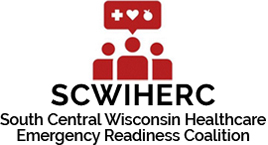Under guidance from the Assistant Secretary for Preparedness and Response, healthcare coalitions across the nation have been tasked with taking a more proactive role to support the healthcare sector during emergencies and disasters. Previously, our role has largely been preparedness, and now we are tasked with creating a regional response plan, also known as regional medical coordination. The general concept is that when the scope of an incident, whether it is occurring internally or externally to a healthcare organization, overwhelms an individual organization, the healthcare coalition is able to provide support in the form of coordination, communication, and mutual aid from other agencies that can provide assistance. All responses start locally, but when local efforts are overwhelmed, we can use a tiered response approach to escalate an incident and bring in additional assistance. The healthcare coalition is the tier between a local organization or jurisdiction and the state.

Regional medical coordination does not replace or usurp individual facility emergency operations plans or local jurisdiction emergency response plans, but rather compliments them to support the safety and continuity of care of the patients in our region before, during, and after emergencies and disasters. This includes the entire spectrum of the patient population, from acute care, subacute care, long-term care, and hospice, to the population living independently but otherwise utilizing home health, ambulatory care, or public health services. Well-executed regional medical coordination efforts have the capability to help improve outcomes for everyone affected by emergencies and disasters.
There are many types of events that can threaten the healthcare sector, but a good all-hazards regional medical coordination plan should work no matter the incident or number of people affected. For what types of incidents should we prepare and be capable of responding? Unfortunately, well-documented events in recent history have shown us. The events of September 11, 2001, Hurricane Katrina, the H1N1 influenza pandemic, the Joplin, Missouri tornado, the Boston Marathon bombing, Ebola, numerous mass shooting events, Hurricanes Harvey, Irma, and Maria, and many other events all have something to teach us about how to improve our coordination efforts and response plans to better protect the health of everyone affected by these events.
So how do we accomplish this task on a regional level? South Central Wisconsin Healthcare Emergency Readiness Coalition, also known as WIHERC Region 5, is home to 1.1 million people and includes 14 counties, 32 hospitals, 89 long-term care facilities, 158 emergency medical service agencies, and numerous other healthcare partners. Given the size and diversity of our region, SCWIHERC leadership decided to break our region into smaller areas, each led by an Area Medical Coordinating Center (AMCC), to allow for more input and local control. Should an area become overwhelmed during a healthcare emergency response, the whole region, led by a regional medical coordinating center (RMCC), can be activated to assist.

The next steps of our regional medical coordination plan development include defining what roles the area medical coordinating centers, regional medical coordinating center, coalition partners, and coalition staff have in coordinating, communicating, and providing assistance. This information will inform the draft regional response plan.
